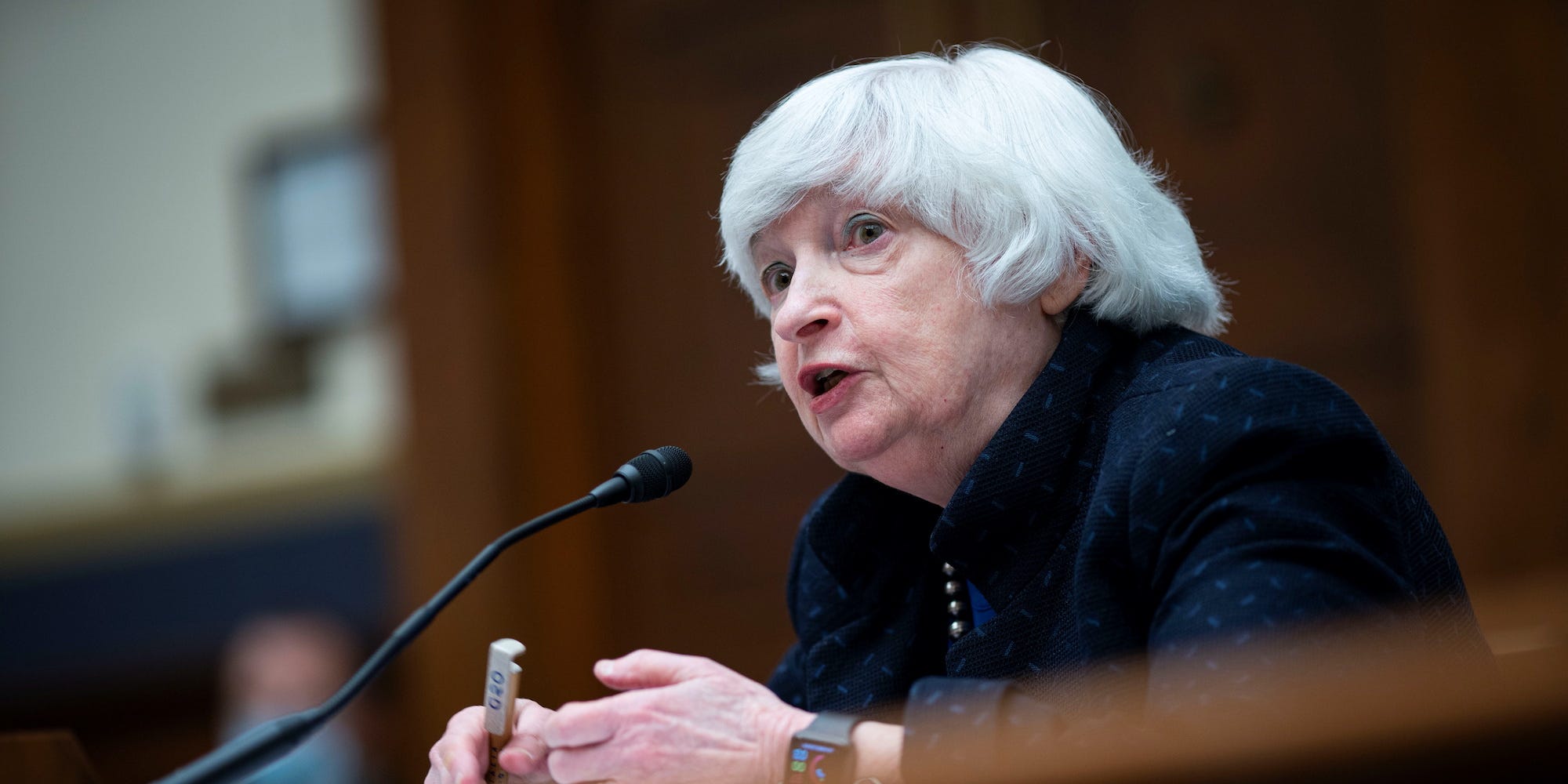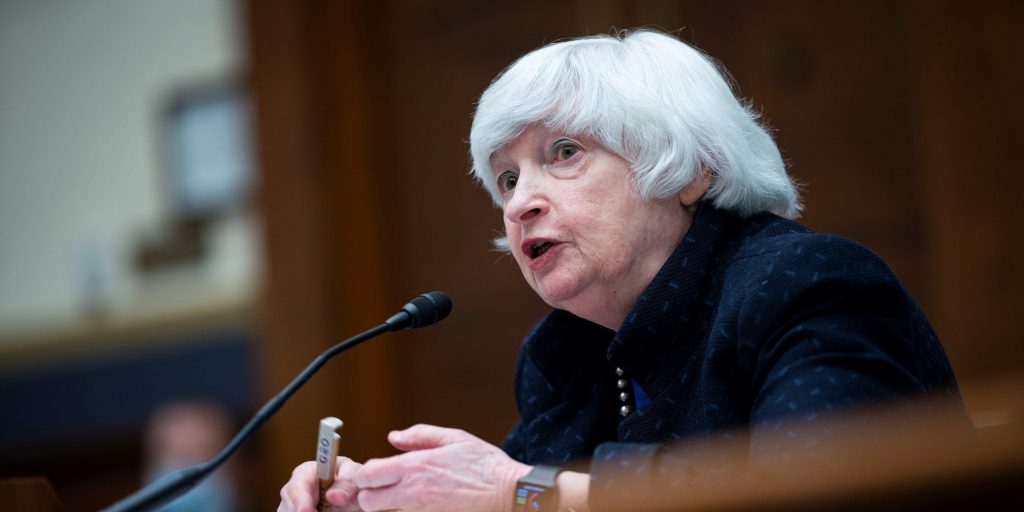
Al Drago/Pool/Reuters
- The US is still on track to reach full employment "next year," Treasury Sec. Janet Yellen said on MSNBC.
- The unemployment rate fell to 4.8% in September, closing in on its pre-pandemic low of 3.5%.
- Yet Americans are quitting their jobs at a record pace, and the labor shortage has slowed the pace of hiring.
Don't worry about the last few jobs reports. The US is still on track to hit full employment "next year," according to Treasury Secretary Janet Yellen.
The unemployment rate fell to 4.8% in September, down from the pandemic peak of 14.8% and closing in on the pre-crisis low of 3.5%. However, nearly 8 million Americans remain unemployed, and there are still more than 10 million job openings across the US.
Americans are quitting their jobs at a record rate of more than 4 million per month. Businesses continue to complain about hiring difficulties, and job creation stumbled last month, with the US adding just 194,000 new jobs. That was less than half the median forecast and signaled the Delta wave had dramatically slowed hiring.
Yellen reaffirmed her positive outlook, but noted the recovery won't be without its snags.
"The labor market in many ways is very tight," Yellen told MSNBC's Stephanie Ruhle in an interview aired Wednesday. "We suffered … a very, very unusual shock that has both put people out of work but also changed patterns of demand, shifting demand away from services like travels, staying in hotels, eating out at restaurants."
While the country has millions of jobs and workers to fill them, the two aren't matching up. Part of the mismatch comes from workers leaving low-paying service jobs in search of positions with higher pay and better working conditions.
While that transition might delay the return to full employment, it will yield benefits for years after the pandemic, Yellen said.
"This is something that we've wanted to accomplish for a long time," she added. "[Businesses] may have to pay more and that will be part of the adjustment. But this is something that's good for workers."
Yellen's boss has made similar remarks on the labor shortage. President Joe Biden posed higher pay as the solution to the labor shortage in June, whispering during a press conference that employers should "pay them more!"
Labor market data in the months since suggest firms listened. The average hourly wage has steadily outpaced forecasts and continues to climb at a faster pace than that seen before the pandemic.
Still, Yellen's hopes for a full recovery could be overly optimistic. For one, many thought the labor shortage would ease in September as schools reopened and enhanced unemployment benefits expired.
Other experts are considerably less hopeful than the Treasury Secretary. Updated economic projections the White House published in August showed the unemployment rate falling to 4% next year. The Federal Reserve's estimates see it dipping slightly to 4.6%. The median forecast from economists surveyed by Bloomberg see the rate only dropping to 4.2%.
Even if the unemployment rate returns to pre-crisis levels, that could only mark one milestone in the path toward recovery. While some sectors have fully recouped their lost jobs, those hit hardest by the pandemic are far from fully healed. The labor shortage could also linger as jobless Americans leverage their bargaining power for higher pay.
Yellen's forecast could come to fruition. But it might not look like the labor market of early 2020.

